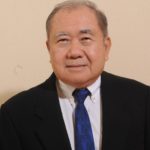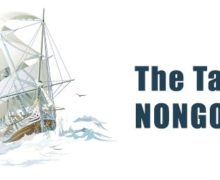![[নোঙর 2016] General cargo shipping in the 1960s and today – An engineer’s perspective : Kenneth Kee](https://bdmariners.org/wp-content/uploads/2016/05/Keneth-Kee_.jpg)
[নোঙর 2016] General cargo shipping in the 1960s and today – An engineer’s perspective : Kenneth Kee
Brief history:
In the 1960s, most ships that carried general cargo for discharge in Singapore were anchored at the eastern anchorages or berthed at wharves in Tanjong Pagar and along Keppel road. Cargo in bags, boxes or bales were moved manually from the cargo holds onto slings or pallets by stevedores and lifted by derricks into wooden barges to be discharged and stored in warehouses on the banks of the Singapore River. Cargo for export and those which could be manually handled or carried were moved by workers from the barges to the warehouses. Cargo at the wharves were moved onto lorries, transported to the warehouses and lifted by forklifts and stored. A tally clerk stationed on the ship’s deck or on the wharf side would tally the number of boxes or bales that were discharged from or loaded to each of the ship’s cargo hold.
Seafarers coming ashore from ships at the anchorages had to take bum-boats from the ship to Clifford Pier. The boat ride from ship to shore (and vice versa) would take 30 minutes to one hour, depending on where the ships were anchored. Clifford Pier has since been conserved and transformed into a historical attraction.
In those days, general cargo ships were manned by a complement of 25 to 30, comprising Master, Chief Officer, 2nd Officer, 3rd Officer and sometimes an additional officer, a Radio Officer, Bosun, 3 ABs, 2 OS and 1 or 2 Deck Cadets on the deck side; Chief Engineer, 2nd Engineer, 3rd Engineer, 4th Engineer, 5th Engineer, Electrical Engineer, Fitter, 2 or 3 greasers and 1 or 2 Engine Cadets on the engine side, and Chief Steward, Chief Cook, Assistant Cook and 2 or 3 Stewards on the catering side. On the Singapore-registered ships that I sailed on in the 1960s and early 1970s, most of the Masters, Chief Engineers and Chief Officers were of British, Polish, German or Norwegian nationalities. The rest of the officers and engineers were mainly Singaporeans and Malaysians and almost all of the petty officers and ratings were Singaporeans.
With the advent of containerization in the 1970s, transportation of general cargo by sea had taken a new dimension. Today, most raw materials, parts, components, manufactured goods and machineries are carried in containers and containership sizes have grown from carrying about 2,000 teus (twenty-foot equivalent units) in the 1970s to 20,000 teus today. Singapore’s port facilities have grown in tandem to cater to the ultra large containerships calling in the port. Singapore continues to be the world’s largest bunkering port with more than 42 million tons of bunkers supplied annually to ships calling in the port. With unmanned machinery spaces, a high degree of automation and centralized controls, modern navigation, communication and cargo handling equipment, the number of crew on today’s ships has been reduced considerably to around 15.
Illustrious Bangladeshi seafarers
In the course of working onboard ships and ashore, I had the opportunity of working with various nationalities apart from Singaporean and Malaysian. Among them were the British, Polish, Norwegian, Danish and Filipino in the 1960s to 1970s; Burmese, Indian, mainland Chinese, Indonesian and Bangladeshi from the 1980s onwards.
In the 1990s, when I was with a locally-owned tanker company, the company recruited both deck and engine cadets from China, India, Pakistan, Indonesia and a number from Bangladesh. The Bangladeshi cadets were keen to pursue sea-going careers. After serving their sea-time and studying/sitting for their CoCs (Certificates of Competency) examinations, they would return to continue ‘clocking’ their sea-time for the next level of their CoCs, until they were qualified as Masters or Chief Engineers.
Having worked with many Bangladeshis since the days of their cadetships or junior officers, I would commend them for their perseverance, hard work, skills, knowledge and ability to adapt to work ashore after leaving the sea.
Some of the notable Bangladeshis working in the marine field with whom I am acquainted with are:
Mr Zafrul Alam (was until lately an Examiner for Engineers and Assistant Director with MPA).
Mr Zulfiqur Husain (Senior Surveyor and Examiner for Engineers with MPA)
Dr Korshed Alam (an expert on marine fuels and Vice President of DNV-GL)
Dr Arun Kumar Dev (Principal Lecturer and specialist in off-shore vessels, Newcastle University Singapore)
I have had the opportunity to work with some young talented Bangladeshi marine professionals who are moving up the career ladder and have potential to excel further.
Capt Mahbubur Rahman (Head of Operations with BTS Tankers Singapore)
Mr AKM Saifullah (Technical Manager with Komaya Shipping Singapore)
Capt Monirul Hasan Ahmed (Senior Marine Superintendent with Maersk Tankers)
Mr Surja Sen Nath (Technical Manager with Stellar Ship Management Singapore)
Capt Tareq Atique Rashid (an experienced chemical tanker Master and Operation Manager, Teras Offshore Pte. Ltd)
Capt Ahsanul Haq Khan (another experienced tanker Master and now Manager, Fleet Marine Operations with Hong Lam Marine)
Capt Iftekhar Alam Khan (Manager, Training with Hong Lam Marine)
Capt Emdad Hossain (Assistant Managing Director with Nathalin Offshore)
and many others.
When working ashore, maritime professionals will have the opportunity to attend courses to pursue further studies/interests in areas such as Maritime Law, Maritime Administration, Maritime Logistics and Supply Chain, Shipping Finance, Marine Insurance, Ship Chartering, Ship Broking and others. I would encourage these professionals to attend at least one of these courses to enhance their knowledge further.
Looking ahead
As a professional body, the Bangladesh Marine Community Singapore (BMCS) can work with other professional societies such as SNAMES (the Society of Naval Architects and Marine Engineers Singapore), JB RINA/IMarEST (the Joint-Branch of the Royal Institute of Naval Architects and the Institute of Marine Engineering, Science and Technology, Singapore), SNI (the Singapore Nautical Institute), IES (the Institution of Engineers Singapore) and other professional bodies to exchange ideas, conduct joint-technical talks and courses, organize social functions to interact and keep abreast of the developments and technological changes affecting the marine industry.
I congratulate the founders and council members of BMCS for bringing maritime professionals together. Best wishes to BMCS in the pursuit of your goals and interests going forward.
—————-
Kenneth Kee
Past President, The Society of Naval Architects and Marine Engineers Singapore

A pioneer of Singapore Maritime Industry, Mr Kenneth Kee’s successful career spanned over 26 years with Neptune Orient Lines (NOL) and 13 years as Managing Director of Petroships and Brostrom Tankers Singapore. During his time as MD of Petroships, an avalanche of young Bangladeshi Mariners were employed for the company. Mr Kee has seen their career progression from close quarters. He has also worked with and known many other Bangladeshi marine professionals (ex-seafarers) working ashore in Singapore. Currently, Mr Kee works with Hong Lam Marine in the capacity of Technical Advisor. As he is closely associated with the shipping and bunkering industry, he is an active member of a number of marine related industry committees, such as, Maritime Industry Advisory Committee, Singapore Maritime Academy, South East Asia Technical Committee of Lloyd’s Register Asia, Technical Committee for Bunkering (under SPRING Singapore), Singapore Shipping Association Technical Committee and other ad-hoc committees, working groups and task groups.




![[নোঙর 2016] Message From the President](https://bdmariners.org/wp-content/uploads/2016/05/R-Qader_Message-220x180.jpg)







Recent Comments